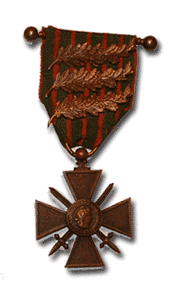United States Air Service
USAS HistorySummary 1917-1918 Lafayette Escadrille
N.124/Spa.124 1st Observation
1st, 12th, 50th, 88th 1st Pursuit Group
27th, 94th, 95th, 147th 1st Bombardment
96th, 11th, 20th 2nd Pursuit Group
13th, 22nd, 49th, 139th 3rd Pursuit Group
28th, 93rd, 103rd, 213th 4th Pursuit Group
17th, 148th, 25th, 141st 5th Pursuit Group
41st, 138th, 638th 3rd Air Park
255th. List of Aces
United States Naval Aviation
US Naval AviationUnited States Marine Corps Aviation
US Marine AviationAircraft
 Nieuport 28
Spad VII
Spad XIII
Fokker Dr.1
Albatros D.Va
Fokker D.VII
Nieuport 28
Spad VII
Spad XIII
Fokker Dr.1
Albatros D.Va
Fokker D.VII
Website: Atlanta SEO
E-mail us

4th Pursuit Group
The 4th Pursuit Group started forming up on October 25, 1918 at Toul. It was allocated to the new 2nd Army Air Service which had been formed on October 12, also at Toul. The first squadron was the 141st Aero Squadron which had started operating two days earlier on October 23rd. Three other squadrons - the 17th, 25th, 148th joined the 141st at Toul in preparation for an offensive which was to commence on November 10th.
The 17th and 148th had already been in combat in the British sector around Picardie in Northern France in the past. The 17th had formed up with Sopwith Camels on June 20, 1918 with nine pilots who had already served with RAF squadrons for three months. On July 1st the 148th was formed in a similar way. Both then served under British overall command and in the British sector and were treated like RAF units until they were folded into the 4th Pursuit Group. The two squadrons had accounted for 123 victories and 33 losses while under British command - nearly as many victories as the 131 by the four squadrons of the 2nd Pursuit Group.
The Americans had requested the two squadrons be transferred back to American command for upcoming offensives. This the British allowed, but without the Sopwith Camels, so the Americans arrived in Toul without airplanes.
Though they had little experience, the pilots of the 141st and 25th had been well trained. As an example of the experience they had, the commander of the 25th was Major Reed Landis who ended the war with 11 victories . But the 25th had also been formed up without aircraft. They finally received S.E. 5s and flew one mission on November 10th, the day before the war ended.
Thus it was really only the 141st that went into combat. It went out for protection patrols for the protection of observation aircraft. During this time it ended up getting engaged in 13 combats, shooting down two German aircraft at no loss for itself. So these two kills for zero losses were the full extent of the victories and losses for the 4th Pursuit Group. So it is likely that the 4th Pursuit Group would have obtained excellent results over time.
The Allied air units had done their job across the front. The Americans had covered their sector well and tangled with the best of the German squadrons and had come out on top. On November 11, 1918, the war was over at last.
Learn more:
1st Observation Group,
1st Pursuit Group,
1st Bombardment Group,
2nd Pursuit Group,
3rd Pursuit Group,
4th Pursuit Group,
5th Pursuit Group and
3rd Air Park.
See the really cool USAS Bases Google Map we've made just for you.
File under:
1st Observation Group - 1st aero squadron, 12th aero squadron, 50th aero squadron
1st Pursuit Group - 27th aero squadron, 94th aero squadron, 95th aero squadron, 147th aero squadron, 185th aero squadron
1st Bombardment Group - 96th aero squadron, 11th aero squadron, 20th aero squadron, 166th aero squadron
2nd Pursuit Group - 13th aero squadron, 22nd aero squadron, 49th aero squadron, 139th aero squadron
3rd Pursuit Group - 28th aero squadron, 93rd aero squadron, 103rd aero squadron, 213th aero squadron
4th Pursuit Group - 17th aero squadron, 25th aero squadron, 148th aero squadron, 141st aero squadron
5th Pursuit Group - 41st Aero Squadron, 138th Aero Squadron, 638th Aero Squadron
3rd Air Park - 255th Aero Squadron
Events/Airshows
 Events/Airshows
Events/Airshows
Pilots/Aviators
 Raoul Lufbery
Raoul LufberyAce of Aces Eddie Rickenbacker
26 victories Quentin Roosevelt
Son of President KIA Frank Luke
18 victories in 17 days Eugene Bullard
1st African Am. Pilot David Ingalls
1st US Navy Ace List of USAS Pilots
Find a Relative American WWI Pilots
Mini bios
USAS Research
 USAS Videos
Reading List
USAS Videos
Reading ListWWI US Aviation Related Links
WWI US Aviation Credits War Wings
by Phillip W. Stewart WWI Maps
Units & Airfields Payne Field
USAS Aerodromes now... USAS Archives
Questions? Need Help? American Expeditionary Forces
WWI Doughboys in France